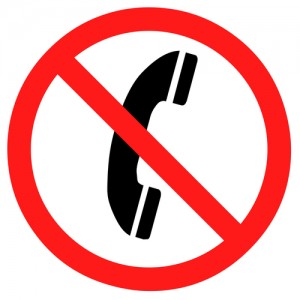Channel Management Best Practices: Avoid Playing Telephone with the End Customer
 The children’s game “telephone” illustrates how a message can get mangled as it passes from person to person. The lesson of the game is to be wary of a communication that comes in third-, fourth-, fifth-hand. Of course, that’s the nature of the channel. Your product has to reach the end customer via at least one partner.
The children’s game “telephone” illustrates how a message can get mangled as it passes from person to person. The lesson of the game is to be wary of a communication that comes in third-, fourth-, fifth-hand. Of course, that’s the nature of the channel. Your product has to reach the end customer via at least one partner.
How do you make sure your value proposition is coming through loud and clear to the customer making the ultimate buying decision? You can have the most brilliant product on the market, but if your partners don’t get it, then your customers won’t get it either. Here are some simple channel management solutions that will ensure the end customers actually hear what’s great about your offering.
Keep it Simple
First, never forget that it takes a simple idea to survive the barrage of marketing messages we all endure in a typical day. If partners have to struggle with a product being hard to understand, they’re either not going to represent it correctly or they’re not going to represent it at all.
There’s a real risk in being so blown away by your own technology that the day-to-day impact on customers is completely lost in the marketing of the product. In an attempt to differentiate themselves in terms of the technology, companies shoot their own foot by convoluting their offering. And you may have an amazingly cutting edge product, but unless you can paint a clear picture in a few words or pictures, partners will do a poor job communicating its value.
Metaphor Marketing
Creating a metaphor that illustrates the value of your offering belongs at the foundation of marketing – especially with a complex product. At one of my previous companies, we had a very technical product based on complex algorithms and mathematics. It helped companies manage their network – but obviously, by itself, that’s just not a very compelling value proposition.
Until we could arrive at a metaphor for the product, it didn’t get off the ground. We settled on the analogy of GPS, which is something completely unrelated to the product, but people know what GPS is and how to use it. We explained that you need a GPS to navigate your city – roads are changing, there’s traffic – and you also need one to navigate your network.
All the messaging and graphics were built around this metaphor for the product. It illustrated that in the same way GPS helps you manage a drive across town, this product helps manage your network traffic. It became a very simple message to understand and to communicate – for channel partners and customers.
Simplifying without Dumbing Down
The beauty of the metaphor is that it allows you to communicate complexity without oversimplifying so much that the product value gets lost. The old adage about making it so simple your grandmother could understand it is actually BS (unless of course your product is for old ladies). Simplifying technical terms by changing the wording just leaves you with a dumb-sounding technical description.
The key to making it easy and the proposition understandable is finding that relevant industry or parallel industry analogy or metaphor because these are the pictures of communication. One of them is worth a thousand words and once someone sees it, it gels in their head. And that’s what makes it easy to sell, that’s what makes it easy for your partners to comprehend and sell it themselves. They get it – and they remember it.
The Best Way to Prevent Channel Conflict? Survey Says…
How to Make Rain in the Cloud